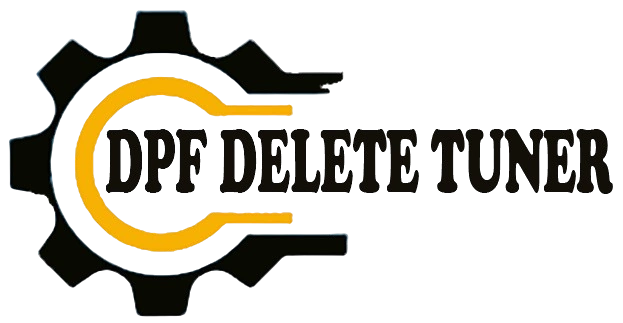Overview
| CODE | REASON | EFFECT |
| Fault Code: 5383 PID: SPN: 3720 FMI: 0/15 LAMP: Maintenance SRT: |
The ash load of the aftertreatment diesel particulate filter has exceeded the recommended limits.
|
None on performance. |
Circuit Description
The engine aftertreatment system monitors the aftertreatment DPF restriction. The diagnostic alerts the operator of the excessive ash in the aftertreatment DPF.
Component Location
The aftertreatment diesel particulate filter is located in the exhaust system and is installed by the original equipment manufacturer (OEM). Refer to the OEM service manual.
Conditions for Running the Diagnostics
This diagnostic runs when the engine is operating and exhaust flow is above a minimum level.
Conditions for Setting the Fault Codes
This diagnostic monitors the aftertreatment DPF differential pressure sensor. When the aftertreatment DPF differential pressure is above a maximum value at the end of an aftertreatment regeneration the fault code is set.
Action Taken When the Fault Code is Active
The ECM will illuminate the MAINTENANCE lamp during the key cycle after the diagnostic runs and fails.
Conditions for Clearing the Fault Code
- In order to clear the fault code, the aftertreatment DPF must be exchanged or properly cleaned and the recommended Cummins® electronic service tool or equivalent must be used to perform an Aftertreatment Diesel Particulate Filter Installation.
Shop Talk
Possible causes of this fault code include:
- Excessive ash in the DPF
Troubleshooting Summary
Solution: S00000085
Verification
Conditions
- Turn keyswitch ON.
- Connect the recommended Cummins® electronic service tool or equivalent.
Action
- Use the recommended Cummins® electronic service tool or equivalent to read the fault codes.
Specification
Before troubleshooting this fault code, troubleshoot any fault code that is active or has more than one inactive count within the last 25 engine operating hours from the following list:
- Aftertreatment differential pressure: 1879, 1881, 1883
Linked Solutions
- None
Repair
- Perform a search on the appropriate fault codes.
Validation
- None
Solution: S00010777
Verification
Conditions
- Turn keyswitch OFF.
Specification
- Proceed to the Repair section if the Technical Service Bulletin is applicable.
Linked Solutions
- None
Repair
- Complete the action outlined in the Technical Service Bulletin.
Validation
- Connect all components
- Connect the recommended Cummins® electronic service tool or equivalent.
- Disable the fault code.
- Operate the engine within the “Conditions for Clearing the Fault Code” found in the Overview section of the troubleshooting procedure.
- Verify that the fault code is no longer active.
- Check ECM Calibration Revision History
- Use the recommended Cummins® electronic service tool or equivalent to find the current ECM code and revision number in the ECM.
- Compare the ECM code and revision number in the ECM to the calibration revisions listed in the ECM Calibration Revision History Database for applicable changes related to this fault code.
- Refer to ECM Calibration Revision History Database.
Solution: S00000443
Verification
Conditions
- Connect all components.
- Turn keyswitch ON.
- Connect the recommended Cummins® electronic service tool or equivalent.
Action
- Use the recommended Cummins® electronic service tool or equivalent to read the fault codes.
- Use the recommended Cummins® electronic service tool or equivalent to find the current ECM code and revision number in the ECM.
- Compare the ECM code and revision number in the ECM to the calibration revision listed in the ECM calibration revision history for applicable changes.
Specification
- If a calibration update for this fault code is available, the ECM calibration revision must be that revision or higher.
Linked Solutions
- None
Repair
- Prior to downloading the ECM calibration, check to see that all job images and all other troubleshooting has been documented as downloading an ECM calibration will remove the fault codes on the ECM.
- Download the updated ECM calibration code.
Validation
- Connect all components
- Connect the recommended Cummins® electronic service tool or equivalent.
- Disable the fault code.
- Operate the engine within the “Conditions for Clearing the Fault Code” found in the Overview section of the troubleshooting procedure.
- Verify that the fault code is no longer active.
- Check ECM Calibration Revision History
- Use the recommended Cummins® electronic service tool or equivalent to find the current ECM code and revision number in the ECM.
- Compare the ECM code and revision number in the ECM to the calibration revisions listed in the ECM Calibration Revision History Database for applicable changes related to this fault code.
- Refer to ECM Calibration Revision History Database.
Solution: S00005270
Verification
Conditions
- Turn keyswitch ON.
- Connect the recommended Cummins® electronic service tool or equivalent.
Action
- If the aftertreatment DPF has already been replaced during this repair, then disregard this solution.
- Use the recommended Cummins® electronic service tool or equivalent to read the fault codes.
Specification
- If the fault code is active or inactive with more than one count within the last 25 engine operating hours, then a plugged or restricted aftertreatment DPF has been detected.
Linked Solutions
- None
Validation
- None
- Connect all components
- Connect the recommended Cummins® electronic service tool or equivalent.
- Disable the fault code.
- Operate the engine within the “Conditions for Clearing the Fault Code” found in the Overview section of the troubleshooting procedure.
- Verify that the fault code is no longer active.
- Check ECM Calibration Revision History
- Use the recommended Cummins® electronic service tool or equivalent to find the current ECM code and revision number in the ECM.
- Compare the ECM code and revision number in the ECM to the calibration revisions listed in the ECM Calibration Revision History Database for applicable changes related to this fault code.
- Refer to ECM Calibration Revision History Database.
If all steps have been completed and no root cause has been identified, then follow the technical escalation process.
